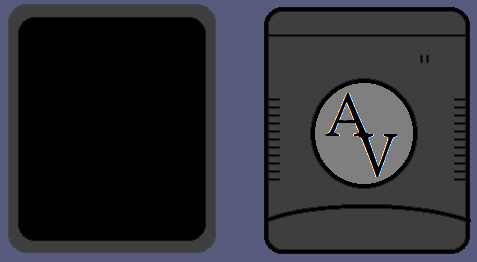Humble Beginnings

The initial idea for the Embedded Resume Project started, as do many innovations, with a complex problem that required an intricate solution. In January of 2020 I was just starting my final semester at university, which meant that I was dusting off my resume and sending out job applications left and right. The only problem was that tens of thousands of engineering students across the United States were doing the exact same thing.
I would find an interesting position before my 8am class only for it to have hundreds of applicants by lunch time. My applications were getting lost in the sea of students saying the same thing, “no, really trust me I am a great candidate for your team”. From a hiring manager’s perspective, I have empathy, as my resume simply showed another soon-to-be graduate looking for entry level positions.
After a bit of thinking, the answer was rather simple. Instead of telling employers that I was a great candidate, why not show them? With this concept in mind, the Embedded Resume Project was born.
Inspiration
I have been pursuing a career in embedded systems engineering ever since stumbling on the field by accident my sophomore year. At the start of the embedded resume project, I had been tailoring my classes toward an embedded focus for a few years and had already completed many personal projects involving PCB, firmware and MCAD design. So, why not combine all three into an impressive embedded system that I could show off to potential employers?
My main problem with traditional resumes is that recruiters and hiring managers, like yourself, only get a small snapshot of me as a candidate. I wanted a device that would tell my story, the whole story. I am so much more than what I can cram into 8 ½” x 11”, and the project needed to reflect that.
I wanted a device that users could interact with, something charismatic with light, sound, and buttons. They should be able to hear me tell my story in my own voice and see actual pictures of my work.
After careful consideration, I decided that I would make a fully-functional digital version of my resume. It would include my projects, experience and many important details that are often excluded from a job application. In short, it would be everything that a traditional resume is not.

I decided that the only way to do this project justice was to design an embedded system as close to an actual cell phone as possible, complete with an eye-catching display and a look and feel that exude sophisticated elegance.
Initial Design Requirements
- Cell phone form factor
- Large color screen for readability
- Method for user interaction (scroll, click etc.)
- Easy access to the electronics
- Battery and plug in power sources
- Audio interface
Proof of Concept
After creating the initial napkin sketch and with the initial design requirements in mind, I moved forward to create a simple 3D model of the device using Solidworks CAD.

Overall, the case had to be both elegant and functional in order to appeal to users and be able to contain all of the electronics.
I tried to make the design as close to a professional consumer-level product as possible. I added a few aesthetic elements, such as the grips toward the bottom and the two raised complement bars on the back of the case. The large hole in the middle would be used to house an intricate laser-etched piece of acrylic.
Although the final case has since been completely redesigned, rendering this 3D model helped inspire me to take the project down a very rewarding path.
An Ambitious Plan
The harder I thought about the device, the more excited I became. I would find myself constantly coming up with new ideas, thinking, “how cool would it be if the user could do xyz?” or “if I lay the hardware out this way I could make the firmware do a neat trick”.
As the days went by and the thoughts piled up, one idea kept coming back to me; What if instead of just being used as a talking point for interviews, the project could also serve as my first impression to employers? I took this concept and formed an admittedly outrageous plan.
I would make not one, but ten of these embedded resume devices. Not only would I design the embedded system itself, but I would develop every aspect needed for this to become a real-life product: intriguing product box, custom foam inserts, an in-depth user manual, breathtaking photography, and a stunning website detailing how and why I was creating all of this in the first place.
These digital resumes would then be boxed up and shipped to my top ten favorite companies. Hiring managers could browse through the device and see first-hand who I was as a candidate with insight that a normal resume simply couldn’t provide:
Searching for an individual who is familiar with firmware?
» Look at these thousands of lines of low-level drivers, middleware and GUI animations written on bare metal
In need of somebody with circuit board design experience?
» Pull the rear cover off the device to reveal a custom, 4-layer PCB with controlled impedance and trace length matching
Want an engineer that can learn a multitude of new skills?
» Browse the product photography, custom packaging, and website design that I spent months researching and developing
Employers would know who I am, what I’m about, and have a physical example of my skillset in the palm of their hands before they ever reached for the phone to talk to me.
Although there were many aspects of the project that I was unsure of, I knew that with enough perseverance I would find a way to make it work. I was excited. I was determined. I was just naïve enough jump headfirst into what has become an amazing journey.